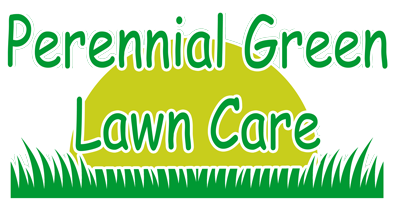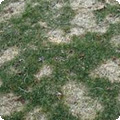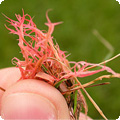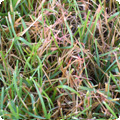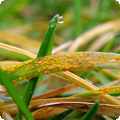There are several diseases that can cause problems for lawns in our area. But first, it is important to understand how diseases develop. An interaction occurs among a susceptible host plant, the pathogen or disease-producing organism and environmental conditions which favor a particular disease development. Since susceptible grasses and pathogens are present in most lawns, it only requires that environmental conditions (usually weather) are favorable for a certain disease or fungus to become active. When these environmental conditions change, it usually will break this interaction and the symptoms of the disease will disappear. The adage that proper lawn maintenance reduces lawn problems is especially true concerning lawn disease. Proper mowing, watering, fertilization and thatch management all play important roles in lawn disease prevention.
Fungicides are available for the prevention or control of lawn diseases. Keep in mind that fungicides are costly and may need to be reapplied to be effective. In most cases, they aren’t worth the investment because the most common lawn diseases in our area are more of a cosmetic problem than one that actually causes damage to turf grass. The following are just a few common diseases that we see in this area.
